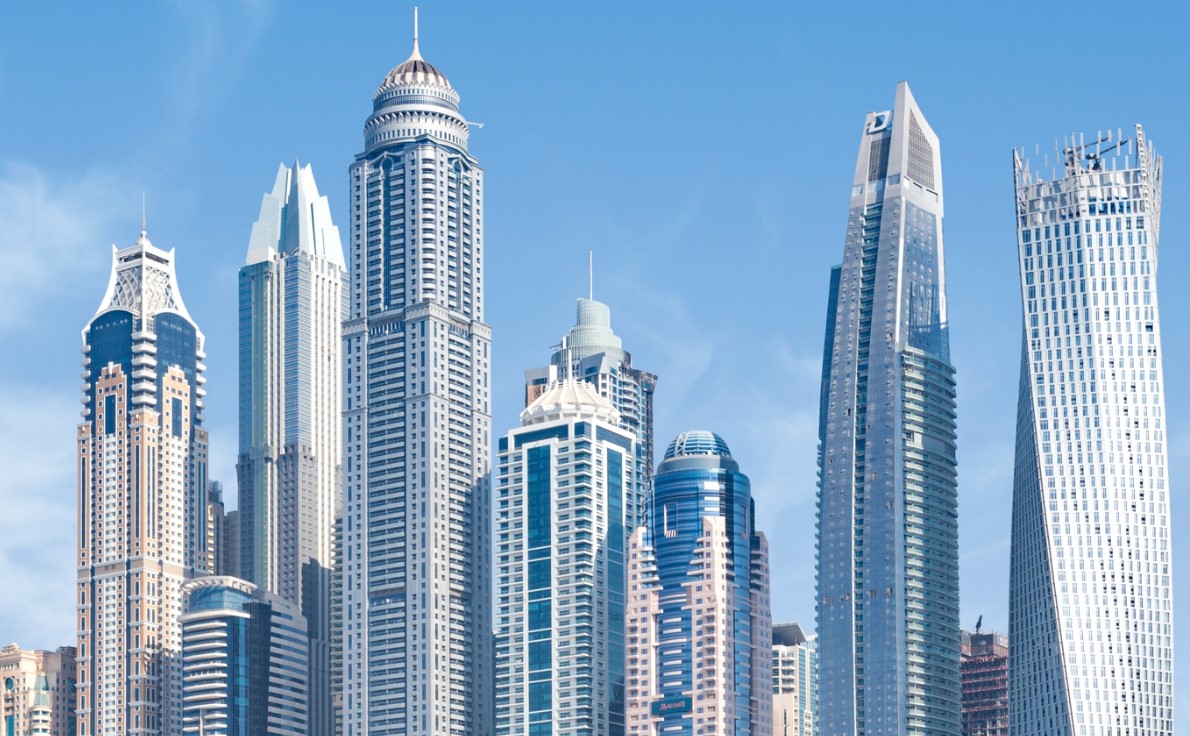In examining the economic landscape of the Philippines in relation to property investments, one cannot overlook the robust and stable economic conditions that underpin the sector’s growth. The nation’s economic climate is characterized by steady advancement and resilience, providing a fertile ground for potential investors seeking sustainable returns.
The Philippine economy exhibits a trajectory marked by consistent expansion and prudent fiscal policies. This economic momentum not only fosters confidence among local businesses but also attracts foreign interest, bolstering the real estate sector through diversified investments and strategic developments. The stable economic environment mitigates risks commonly associated with investment ventures, offering a favorable backdrop for long-term asset appreciation and profitability.
These factors collectively enhance the attractiveness of real estate investments, positioning the Philippines as a compelling destination for prudent investors seeking both growth and security.
High Potential for Rental Income
In the context of leasing out properties in the Philippines, there exists a substantial opportunity for generating recurring earnings through rental payments. This financial stream is driven by the demand for residential and commercial spaces across various urban and suburban areas within the country.
The attractiveness of rental income stems from the consistent revenue it provides, acting as a reliable source of financial gain for property owners. This income potential is bolstered by the ongoing urbanization and economic growth trends observed throughout the Philippines.
Rental properties in key metropolitan hubs such as Manila, Cebu, and Davao experience particularly strong demand due to factors such as population growth, increasing employment opportunities, and the development of business districts. These dynamics contribute to a competitive rental market, allowing property owners to capitalize on higher rental rates and occupancy levels.
Moreover, the flexibility in rental terms and property types caters to a diverse tenant base, including expatriates, young professionals, students, and families. This diversity enhances the resilience of rental income streams, mitigating potential risks associated with economic fluctuations.
Strong Demand from Expatriates and Locals
In the vibrant real estate landscape of the Philippines, there exists a robust and growing interest in properties among both expatriates and local residents. This demographic diversity contributes significantly to the dynamic demand seen across various property sectors throughout the country.
Expatriates, drawn to the Philippines for its favorable climate, vibrant culture, and economic opportunities, seek residences that offer not just comfort but also investment potential. They often favor properties that align with international standards while providing a sense of community and security.
- Expatriates frequently opt for condominiums in central urban areas, appreciating the convenience and amenities these locations offer.
- Local residents, on the other hand, view real estate as a stable investment and a means of securing financial stability for future generations.
The demand from locals spans a wide range of preferences, from traditional family homes in suburban neighborhoods to modern developments that cater to evolving lifestyle choices.
Both expatriates and locals alike contribute to a competitive real estate market characterized by diverse offerings and strong investment potential. This dual demand not only fuels development but also ensures a resilient market capable of withstanding economic fluctuations.
Understanding this demand is crucial for investors looking to capitalize on the Philippines’ thriving real estate sector, offering opportunities that cater to a broad spectrum of needs and preferences.
Tourism Boom Driving Short-term Rentals
In the current landscape of the Philippines’ thriving hospitality sector, the surge in tourist arrivals has significantly bolstered the demand for short-term rental accommodations. This phenomenon is not just a fleeting trend but a fundamental shift driven by the increasing preference of travelers for personalized and unique lodging experiences over traditional hotel stays.
Moreover, the economic impact of short-term rentals extends beyond individual property owners to local businesses and communities. By attracting tourists who stay longer and spend more in surrounding areas, these rentals contribute significantly to the overall tourism revenue and stimulate growth in related sectors such as dining, transportation, and retail.
Diverse Property Options Across Regions
Urban Metropolises offer a bustling array of high-rise condominiums and apartments, perfect for those seeking proximity to business districts and vibrant city life. These properties often feature modern amenities and convenient access to transportation hubs.
Coastal regions boast picturesque seaside villas and beachfront properties, promising stunning views and a relaxed, resort-like ambiance. These areas attract both homeowners and investors looking to capitalize on tourism and leisure industries.
Rural landscapes provide serene retreats amidst lush greenery and expansive plots of land. Ideal for agricultural ventures or serene residential communities, these areas emphasize a tranquil lifestyle away from the urban hustle.
Emerging growth centers present promising investment opportunities with burgeoning infrastructure and expanding commercial sectors. Here, one finds a blend of residential and commercial developments poised for future appreciation and economic growth.
Historical districts offer unique heritage homes and colonial-era properties, appealing to enthusiasts of architectural preservation and cultural immersion. These areas often attract buyers looking to invest in both history and timeless charm.
Mountainous regions provide a different perspective with hillside retreats and mountain cabins, catering to those seeking cooler climates and breathtaking natural panoramas. These properties appeal to nature lovers and adventure enthusiasts alike.
Metro Manila vs. Provincial Markets
Metro Manila, as the bustling capital and financial hub, presents a dynamic environment characterized by high demand and competitive pricing. On the other hand, provincial markets across the Philippines signify a diverse array of opportunities that often feature lower entry costs and potential for substantial growth.
- Economic Vibrancy: Metro Manila boasts a vibrant economy with a concentration of businesses, multinational corporations, and a robust infrastructure network.
- Cost Dynamics: Comparatively, provincial markets offer more affordable property options with favorable price-to-rent ratios, appealing to investors seeking lower initial investments.
- Growth Potential: While Metro Manila faces saturation in some segments, provincial markets present untapped potential driven by urbanization, infrastructure development, and rising consumer demand.
- Regulatory Environment: Understanding local regulations is crucial; Metro Manila and provincial markets may differ significantly in zoning laws, taxation policies, and administrative procedures.
- Risk and Stability: Metro Manila, despite higher entry barriers, offers stability and liquidity, whereas provincial markets may involve higher risk but potentially higher returns.
Ultimately, choosing between Metro Manila and provincial markets hinges on an investor’s risk tolerance, financial goals, and familiarity with local market dynamics. Both settings present distinct opportunities to capitalize on the growth of Philippine real estate, each with its own set of strategic advantages and considerations.
Overall, the Philippines offers a diverse real estate landscape that goes beyond conventional definitions, encompassing a wide range of property types and investment potentials across its varied regions.
Government Policies Fostering Property Sector Growth
Through strategic initiatives and regulatory frameworks, the government aims to enhance the environment for property investments. Policies are designed not only to facilitate economic growth but also to ensure sustainable development practices across urban and rural areas. Such measures encompass incentives for developers, zoning regulations, and environmental standards that collectively aim to foster a resilient and vibrant real estate sector.
Moreover, governmental interventions extend beyond mere regulatory oversight. They encompass fiscal policies that incentivize both local and foreign investments, promoting stability and growth within the property market. These initiatives are crafted to attract diverse investors and stakeholders, thus enriching the industry’s ecosystem and expanding opportunities for sustainable urban development.
Furthermore, the government’s commitment to infrastructure development plays a crucial role in driving demand and enhancing property values. Investments in transportation networks, utilities, and public amenities not only improve accessibility but also stimulate demand for residential, commercial, and industrial properties, thereby fortifying the overall investment climate.
In conclusion, the Philippine government’s proactive stance towards real estate is reflected in its comprehensive policies and strategic initiatives. By fostering an enabling environment that encourages innovation, sustainability, and investment, these policies are instrumental in propelling the growth and resilience of the property sector, making it a promising landscape for investors and developers alike.
Why invest in real estate in the Philippines?
Investing in real estate in the Philippines offers several advantages such as high potential for rental income due to increasing demand, favorable demographics with a young population driving housing needs, and potential for property value appreciation in key urban areas like Metro Manila and Cebu.
What are the key benefits of investing in Philippine real estate?
The key benefits include diversification of investment portfolio, stable economic growth supporting property market stability, relatively low property taxes and transaction costs compared to other countries, and the opportunity to leverage the Philippines’ growing tourism industry for rental income.
Are there specific regions in the Philippines that offer better investment opportunities?
Yes, regions like Metro Manila, Cebu, Davao, and areas near emerging business districts and tourist destinations are popular for real estate investment due to high demand for residential and commercial properties, infrastructure development, and economic growth driving property appreciation.
What are the risks associated with investing in Philippine real estate?
Some risks include regulatory changes affecting foreign ownership, potential fluctuations in property prices, challenges in property management and tenant relations, and currency exchange rate risks if investing from abroad.



Leave a Reply